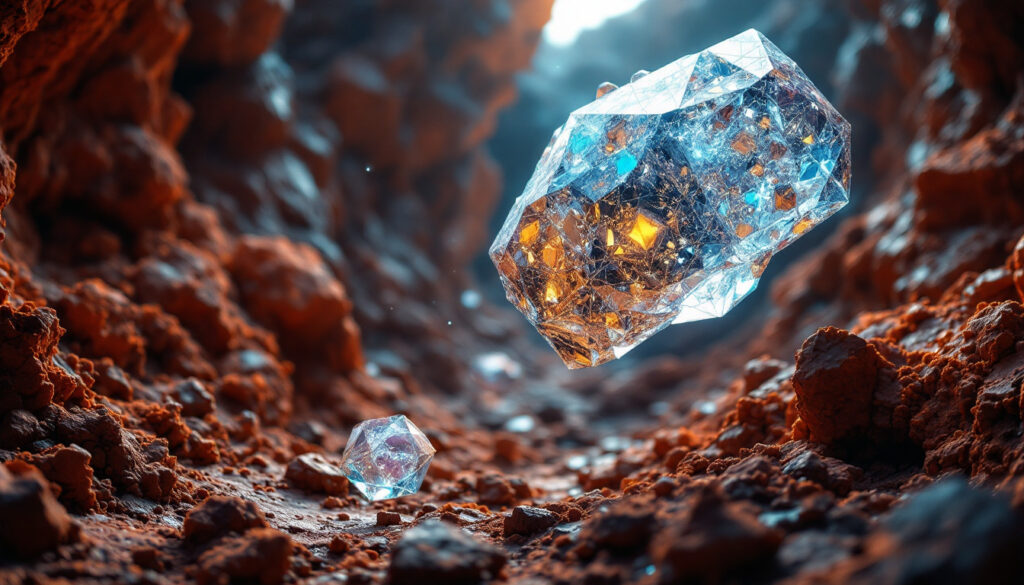Ehrigite: New Mineral Named After BHP's Kathy Ehrig
The recent discovery of ehrigite, a sub-microscopic bismuth telluride mineral with a unique crystal structure, marks a significant advancement in mineralogical research. Named in honor of Kathy Ehrig, BHP's superintendent of geometallurgy, this discovery underscores the intersection of academic rigor and industrial application. Researchers Cristiana Ciobanu and Nigel Cook of the University of Adelaide identified ehrigite using atomic-resolution transmission microscopy, a process spanning over a decade before achieving formal recognition by the International Mineralogical Association (IMA).
With only 90-110 new minerals approved annually out of 6,100 recognized species, ehrigite's classification highlights the critical role of advanced instrumentation in modern mineralogy. This discovery not only celebrates Ehrig's contributions to bridging geology of ore deposits but also opens pathways for technological innovation and resource efficiency in mining.
What is Ehrigite and How Was It Discovered?
The Discovery of Ehrigite
Ehrigite's identification required cutting-edge analytical techniques, including atomic-resolution transmission electron microscopy, to resolve its sub-microscopic structure. Professors Cristiana Ciobanu and Nigel Cook spearheaded this effort, leveraging decades of expertise in mineral characterization.
The mineral's composition—a bismuth telluride variant—suggests potential applications in semiconductor technology, though further research is needed to explore its properties. The IMA's approval process, which demands unanimous international consensus, underscores the rigorous validation required for new mineral species.
The Significance of New Mineral Discovery
The discovery of ehrigite exemplifies the challenges and opportunities in contemporary mineralogy. Most newly identified minerals are microscopic, necessitating sophisticated tools like focused ion beam milling and high-resolution spectroscopy.
These advancements enable researchers to decode mineral formation processes at atomic scales, offering insights into geological exploration trends. For industries reliant on rare earth elements, such discoveries could mitigate supply chain vulnerabilities by identifying alternative sources.
Who is Kathy Ehrig and Why Was the Mineral Named After Her?
Kathy Ehrig's Professional Background
With over 30 years at BHP, Kathy Ehrig has revolutionized geometallurgy—a discipline integrating geological data with processing workflows. As superintendent of geometallurgy, her work at the Olympic Dam operation optimized resource extraction by correlating mineralogical traits with processing outcomes.
This approach reduced operational uncertainties and enhanced predictive modeling, setting benchmarks for the industry.
Her Contributions to Mining Science
Ehrig's legacy lies in her ability to translate mineral exploration insights into actionable processing strategies. By characterizing ore bodies years before mining commenced, her team developed models that improved recovery rates and reduced waste.
For instance, her methodologies enabled BHP to preemptively address mineral variability, ensuring consistent output quality. Such innovations underscore the economic and environmental value of proactive geometallurgical analysis.
How Does the Discovery of New Minerals Impact the Mining Industry?
Technological and Industrial Applications
Ehrigite's discovery highlights the potential for new minerals to address global resource demands. Bismuth tellurides, for example, are critical in thermoelectric devices, which convert waste heat into electricity.
As industries seek sustainable alternatives, identifying mineralogical novelties could accelerate green technology adoption. Furthermore, rare earth elements—vital for renewable energy infrastructure—may see diversified sourcing through similar discoveries.
Improved Mining Efficiency and Exploration
Atomic-scale mineral analysis, as demonstrated in ehrigite's characterization, refines exploration targeting. By understanding depositional environments at microscopic levels, geologists can prioritize high-potential zones, reducing exploratory costs.
Additionally, enhanced mineralogical knowledge enables tailings reprocessing, extracting residual metals from waste materials. These efficiencies align with global sustainability goals, minimizing ecological footprints while maximizing resource utilization.
What Research Developments Are Following This Discovery?
Continued Scientific Collaboration
Ciobanu, Cook, and Ehrig secured an $894,000 Australian Research Council grant to advance computational mineralogy, focusing on copper-iron sulphides. This research aims to predict mineral behavior under varying conditions, aiding in ore processing optimization.
Such collaborations between academia and industry exemplify the symbiotic relationship driving modern mineral sciences.
The Future of Mineralogical Research
The resolution of atomic-scale structures, as achieved in ehrigite's discovery, sets a precedent for future studies. Emerging technologies like quantum microscopy and machine learning algorithms promise to unravel complex mineral assemblages, accelerating discovery rates.
BHP's investment in these technologies signals a broader industry shift toward digital mining transformation, ensuring long-term resource sustainability.
FAQ About Mineral Discovery and Naming
How are new minerals officially recognized?
The IMA mandates stringent criteria for mineral approval, requiring detailed crystallographic, chemical, and contextual data. Proposals undergo peer review by international committees, ensuring methodological rigor.
Naming conventions often honor discoverers, locations, or notable characteristics, as seen in ehrigite's tribute to Kathy Ehrig. According to CSIRO research, this recognition process helps standardize mineral identification globally.
Why is the discovery of microscopic minerals important?
Microscopic minerals often host rare elements critical for advanced technologies. Their study elucidates geological processes, such as magma crystallization and hydrothermal activity, informing predictive models for ore formation.
Additionally, they contribute to material sciences, inspiring novel alloys and composites.
What role does geometallurgy play in modern mining?
Geometallurgy integrates geological, metallurgical, and economic data to optimize mining workflows. By predicting ore behavior through mineralogical analysis, it reduces processing inefficiencies and environmental impacts.
Ehrig's work exemplifies how geometallurgical frameworks enhance operational resilience and profitability. As highlighted in a recent BHP mineral processing study, these approaches are becoming increasingly essential for sustainable resource management.
Conclusion
The naming of ehrigite commemorates Kathy Ehrig's indelible impact on mining sciences while showcasing the transformative potential of mineralogical research. As industries grapple with resource scarcity and sustainability challenges, discoveries like ehrigite underscore the importance of interdisciplinary collaboration and technological innovation.
Future endeavors must prioritize atomic-scale analysis and computational modeling to unlock the next generation of mineral resources, ensuring equitable and efficient global development. For investors, understanding the JORC code will remain crucial as new minerals like ehrigite potentially influence resource classifications and valuations.
Want to Spot the Next Major Mineral Discovery?
Don't miss out on potentially transformative opportunities in the mining sector – Discovery Alert's proprietary Discovery IQ model instantly identifies significant ASX mineral discoveries like ehrigite and other game-changing findings. Explore historic returns from major discoveries and gain a market-leading advantage by visiting Discovery Alert's dedicated discoveries page today.




